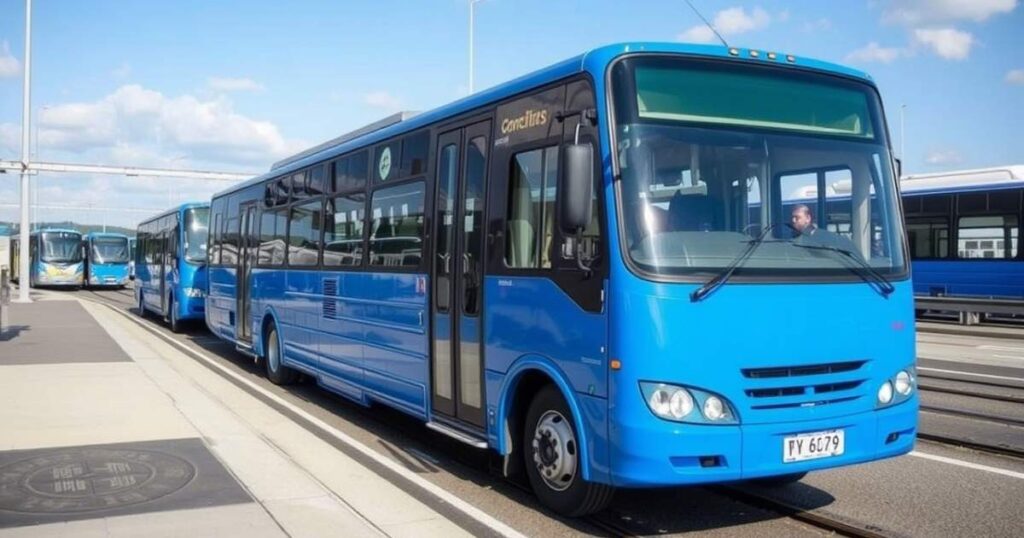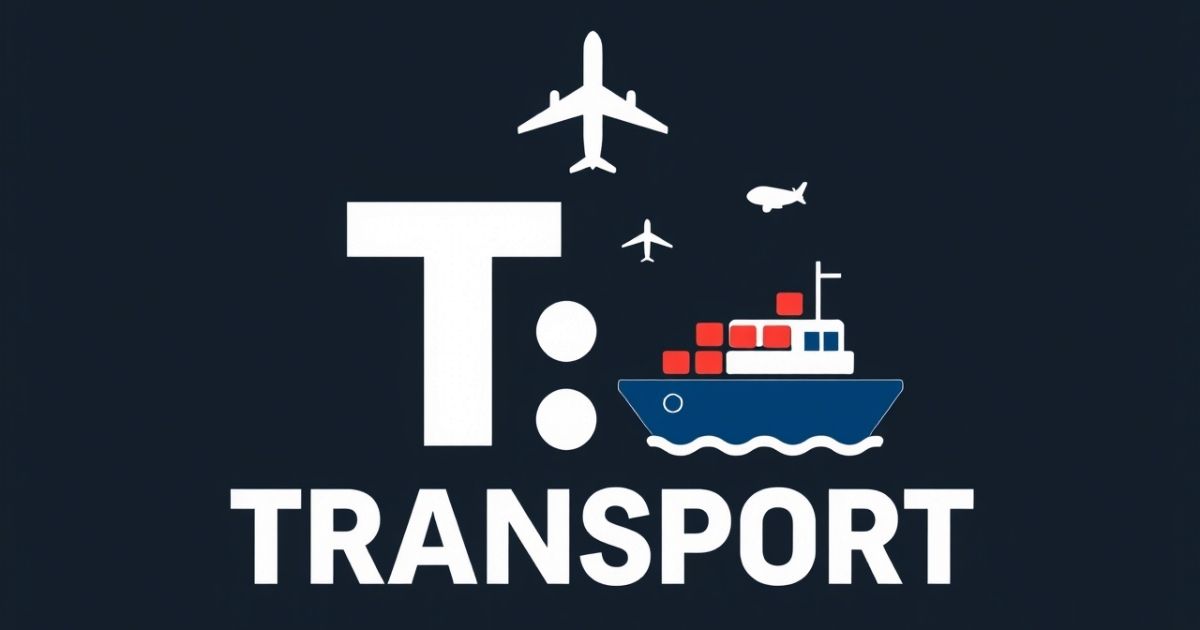The abbreviation for transport is commonly used to simplify communication in industries like logistics, shipping, and public transit. By using a shortened form, people can quickly convey important information, saving time and space. There are several ways to abbreviate transportation, with “TPT” and “Tr.” being some of the most common transport abbreviations seen on shipping forms, schedules, and road signs. Understanding the abbreviation for transport helps professionals and consumers alike stay organized and informed in fast-paced environments.
When you need to know how to abbreviate transportation, it’s useful to recognize the different forms of the abbreviation for transportation that are widely accepted. Whether you’re in a logistics business or just reading a public transit schedule, knowing how to use the right abbreviation for transport can make things easier. These simple abbreviations help keep communication clear and concise, which is crucial for efficient transport and logistics management.
What is the Abbreviation for Transport?

You’ve probably come across the word transport shortened to “Tr.” or “TPT.” These are just a few examples of how the term is abbreviated in both professional and everyday contexts.
Why do we use abbreviations for transport? It’s all about efficiency. Abbreviations make communication quicker and more concise, particularly when space is limited, such as on signage, schedules, or shipping documents.
For example:
- Tr. is used for transport on shipping labels and schedules.
- TPT often appears in logistics invoices and freight paperwork.
The Importance of Abbreviation in Transport
The abbreviation for transport plays a crucial role in ensuring efficient communication in the transport and logistics sectors. By shortening long terms, it becomes easier to convey information quickly, especially when dealing with large volumes of data, such as in shipping labels or transport routes. These abbreviations help reduce errors and misunderstandings, allowing for smoother operations in fast-paced environments.
In industries where time and space are critical, the abbreviation for transport simplifies documentation and reporting. For example, on road signs, train schedules, and flight boards, the use of abbreviations ensures that key details are communicated effectively without overwhelming the reader. This streamlined communication enhances efficiency and reduces the chances of costly mistakes.
How to Pronounce Transport
The word “transport” is pronounced as /ˈtrænsˌpɔrt/ in phonetic symbols.
Here’s a breakdown of the pronunciation:
- “Trans” sounds like “træns” with a short “a” sound (like in “cat”).
- “Port” sounds like “pɔrt,” with a soft “or” sound, similar to the word “short.”
What Does Transport Mean?
Transport refers to the movement of people, goods, or animals from one location to another. It can involve various modes, such as cars, buses, trains, airplanes, or ships, used for traveling or shipping items.
For example:
- Public transport includes buses and trains that help people move within cities.
- Freight transport involves the movement of goods using trucks or ships.
Examples of Transport in Action
- Public Transport: Buses and trains helping commuters travel to work every day, reducing traffic and providing an affordable alternative to driving.
- Air Freight: Cargo planes delivering goods like electronics or clothing across countries, ensuring fast international shipping.
- Ride-Sharing: Services like Uber and Lyft offer a convenient mode of transport for individuals to get from one place to another without owning a vehicle.
- Shipping Containers: Large ships carrying containers filled with products from factories overseas to ports around the world, supporting global trade.
Short Abbreviation for Transport
It seems like you’re asking for examples of how to use abbreviations or similar phrases like “for example” or “for instance.” Here’s how they might be used in the context of transport:
- For instance, buses and trains are commonly used as public transport options in large cities.
- For example, the abbreviation “Tr.” can be seen on shipping labels to represent transport.
Acronym for Transport: Do We Have One?
Yes, there are a few acronyms for transport used in various contexts. While “TPT” is commonly used to represent transport, it is important to note that acronyms can vary depending on the specific industry or region.
For example:
- TPT is frequently used in logistics to represent transport in shipping and freight documents.
- TRP can sometimes be seen in contexts like public transportation to refer to transportation-related policies or systems.
Related Guide:
Common Abbreviation for Little Short Forms
Synonyms for Transport
Here are some common synonyms for transport, each with its own specific use depending on the context:
- Conveyance : Refers to the act of transporting something or someone.
- Transit : Often used to describe the process of moving goods or people from one place to another.
- Shipping : Commonly used when referring to the movement of goods, especially by sea or air.
- Hauling : Refers to the act of carrying or dragging something heavy, often associated with trucks.
- Carriage : Used for the transportation of goods or people, especially in historical or formal contexts.
- Freight : Refers to goods that are transported, typically by ship, truck, or train.
These synonyms all capture aspects of transport, from moving people to shipping goods.
Antonym for Transport
The antonym for transport would be “immobility” or “stagnation.” These words represent the opposite of movement or travel, focusing on a lack of motion.
- Immobility refers to the state of being stationary or not moving.
- Stagnation is the condition where something remains still and doesn’t progress or move forward.
When to Use the Abbreviation for Transport
The abbreviation for transport, such as “Tr.” or “TPT,” is used to save space and time in contexts where the full word “transport” would be too lengthy or repetitive. It’s especially useful in industries like logistics, shipping, and public transportation.
Here are a couple of examples of when to use it:
- In Shipping Documents: On delivery forms or freight invoices, “Tr.” can be used to refer to transport methods, saving space in the document.
- In Public Transit Systems: “TPT” might appear on bus schedules or transit maps to represent transport routes or services.
Example of Abbreviation for Transport in Context
Here’s an example of how the abbreviation for transport can be used in context:
- Tr. is listed on the delivery form to indicate the method of transport used for the shipment of goods from the warehouse to the customer.
- The bus station displays TPT to represent transport services available for commuters, including buses, trains, and trams.
In both cases, abbreviations like “Tr.” and “TPT” streamline communication while still conveying the necessary information about transport.
The History of the Word Abbreviation for Transport
The abbreviation for transport has evolved over time as industries like shipping, logistics, and public transit needed efficient ways to communicate. Derived from the Latin word “transportare,” abbreviations like “Tr.” and “TPT” became common in the 19th and 20th centuries to save space and simplify documentation in growing sectors that required quick and clear communication.
Etymology: From Latin to English

The word transport comes from the Latin term “transportare,” which means “to carry across.” It is derived from two components:
- “Trans-“ meaning “across” or “beyond.”
- “Portare” meaning “to carry” or “to bear.”
Originally, transport referred to the physical act of moving items, often over land or water. Over time, the meaning expanded to include a wide range of systems and methods for moving people, goods, and services across different environments.
Early Usage: The 14th Century
The word “transport” first appeared in English during the 14th century, initially used to describe the act of moving goods, especially across water or land. It referred primarily to the physical movement of items, particularly in trade and military contexts.
The Industrial Revolution and the Rise of Modern Transport
During the Industrial Revolution in the 18th and 19th centuries, transport evolved rapidly. The invention of steam engines and the expansion of railroads and ships revolutionized how people and goods moved, making transport faster, more efficient, and accessible to the masses.
Transport Today: More Than Just Moving Things
In modern times, transport has expanded beyond just the movement of goods to include complex global systems that connect people, goods, and services worldwide. It involves infrastructure like highways, airports, ports, and public transit, all integrated into a fast-paced, global economy.
Key Milestones in Transport History
- The invention of the wheel (circa 3500 BCE) laid the foundation for transport methods.
- The steam engine in the 18th century led to the creation of railways, transforming travel and trade.
- The introduction of airplanes in the 20th century further revolutionized long-distance travel and freight.
A Word with Rich History

The term “transport” has a rich history, evolving from a basic concept of carrying goods to a term encompassing complex global systems of movement. It has seen significant change from the 14th century to the Industrial Revolution and continues to evolve with advancements in technology, making it essential in modern society.
FAQ’s
What is the meaning of transport abbreviation?
The abbreviation for transport helps simplify communication, especially in logistics or public transit. It saves time and space in documents, schedules, and signage.
When is the transport abbreviation used?
You’ll often see the abbreviation for transport in shipping labels, road signs, and timetables. It’s used to make things clearer and more concise in busy industries.
How can we abbreviate transportation in writing?
To abbreviate transportation, people use terms like TPT or Tr. This shortens lengthy words and makes communication smoother in logistics and transit services.
Where can you see the transport abbreviation?
In public transit systems and logistics, the abbreviation for transport is common. It’s often on schedules, freight documents, and even on maps for efficiency.
Why is the transport abbreviation important?
The abbreviation for transport helps maintain clear communication in industries with high volumes of data. It makes exchanges faster and more organized, particularly in busy environments.
Conclusion
The abbreviation for transport plays a vital role in improving efficiency and clarity in communication. Whether it’s used in logistics, shipping, or public transit, the abbreviation for transport helps save time and space, making it easier to share information. Recognizing the correct transport abbreviation is essential for smooth operations in various industries, from freight companies to transit systems.
When considering how to abbreviate transportation, it’s clear that understanding the abbreviation for transportation can simplify many tasks. Knowing the different ways to abbreviate transportation allows professionals to communicate quickly and effectively. In everyday life or business, mastering the abbreviation for transport ensures that messages are clear and concise, leading to better coordination and fewer mistakes.

Atlas Reid is an experienced administrator with 5 years of expertise in managing operations, streamlining processes, and ensuring efficiency. Skilled in leadership, organization, and problem-solving to drive business success.








